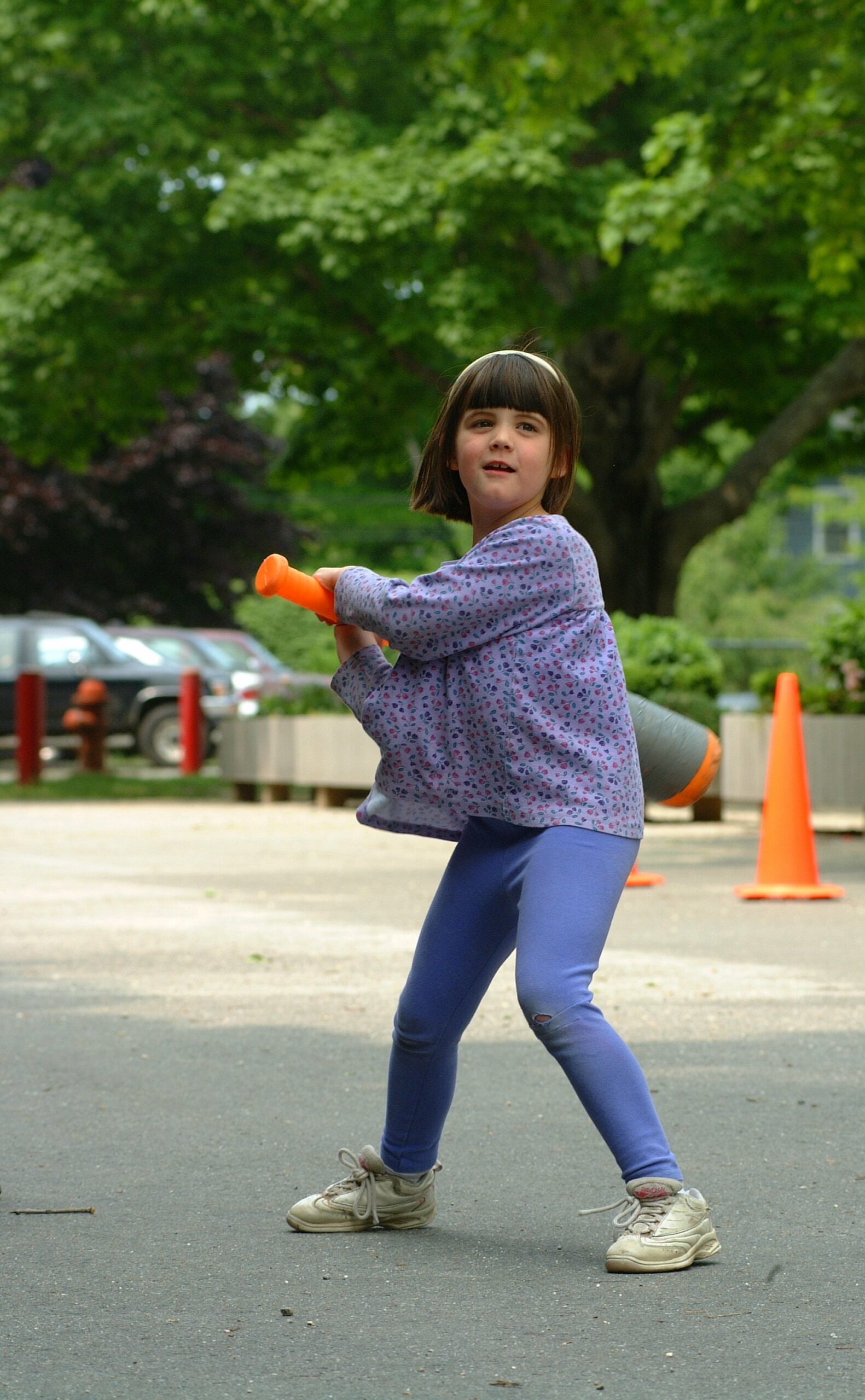As you observe children between the ages of 5 and 14, you will see improved coordination in both gross and fine motor development. School age children exhibit gains in four large muscle or gross motor areas: balance, flexibility, agility and force. As fine motor skills develop, you will see improved hand-eye coordination and more control of the muscles of the hands and wrists. What does this mean for an after school program?
You need to see where the children are in their physical development and then plan activities to help move the child along the continuum of development
Carole Eller and Maureen Mulroy in Developmentally Appropriate Programming for School Age Children tell us that school-age children from age 5 through 7 are perfecting their gross motor skills in running, jumping, throwing and catching. In the after school time, young children this age need time to practice these skills and can be introduced to the rules of games. Games like Giant Steps, Red Light/Green Light, and Hopscotch allow children to practice their skills and will introduce them to the rules for games. Young children may have difficulty with skills that require a rapid response like dribbling and batting. Activities like T- Ball, Four Square and Kickball are appropriate. Instruction in tennis and basketball come later. They develop fine motor skills and hand-eye coordination as they practice skills such as cutting, pasting and drawing. (Eller, pg. 2)
Children ages 8 through 10 are interested in learning more complex skills related to team sports. This is the time for them to learn the basic skills and rules of the sport, keeping in mind that everyone needs the opportunity to play and succeed. Their hand eye coordination is good and they enjoy sampling a wide variety of art and craft projects. They are now able to draw three dimensional forms. The process of doing is more important than perfect products.
The older child ages 11 through 14 have greater control of their bodies and are ready to learn to fine points of team sports, relate to the knowledge of a coach or instructor and enjoy teaching younger children physical skills. Individual work in dance, drama, martial arts and gymnastics is satisfying for many. Because they have well developed hand-eye coordination at this age, delicate fine motor activities like calligraphy, architecture, carpentry, sculpture, handwork like sewing, braiding and weaving and computer games are favorites according to Chip Wood in Yardsticks: Children in the Classroom Ages 4-14. ( Woods, p. 138)
Here are some online resources to help you plan activities that help children practice motor skills:
Fink, Jennifer L.W. Kindergarten Activities: Fine Motor Skills available at http://www.scholastic.com/teachers/article/kindergarten-activities-fine-motor-skills
Over 18 Fine Motor Activities Using Yarn available at http://buggyandbuddy.com/18-fine-motor-activities-kids-using-yarn/
Underwood, Crystal. Fine Motor Activities for Kids available at http://www.growingajeweledrose.com/2013/04/fine-motor-activities-for-kids.html
Sonnier, Allison. Educational Gross Motor Activities available at http://www.learnplayimagine.com/2013/03/educational-gross-motor-activities.html
Callender, S.A. (2007). Gross and Fine Motor Activities for Early Childhood: Children ages 6-12 years. Mississippi State, MS: Mississippi State University Early Childhood Institute. available at http://www.earlychildhood.msstate.edu/resources/motoractivities/pdfs/school-age.pdf
References:
Eller, Carole L. and Mulroy, Maureen T. . (1993). Developmentally Appropriate Programming for School Age Children. Storrs, CT. University of Connecticut Cooperative Extension.
Wood, Chip. (2007). Yardsticks: Children in the Classroom Ages 4-14, 3rd Edition. Turner Falls, MA. Northeast Foundation for Children.


I thought it was interesting that children around the ages of 8 to 10 are typically more interested in learning about team sports. I remember that I used to love playing kickball at recess. It wasn’t serious like baseball and all skill groups could participate.